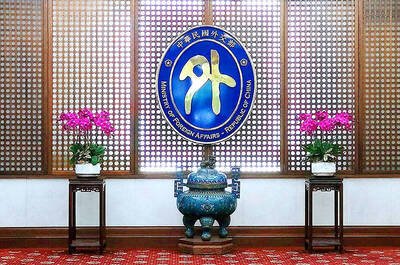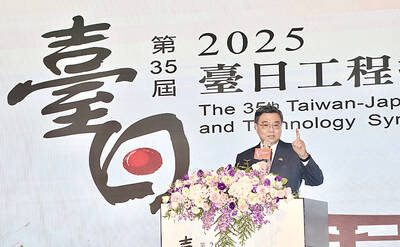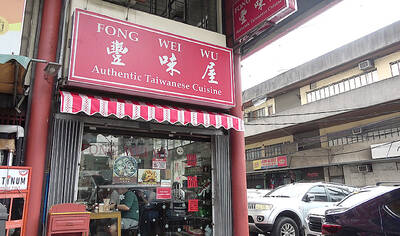More than half of Taiwanese view the “one country, two systems” framework as a failure and support the nation “going its own way” as Hong Kong marks the 20th anniversary of its handover to China, a survey published yesterday by the Taiwan Thinktank showed.
More than 52 percent of respondents said that the “one country, two systems” model applied in Hong Kong has proved a failure, with only 22 percent viewing it as a success.
More than 63 percent were pessimistic about Hong Kong’s democracy, with only 22 percent expressing optimism.

Photo: Wang Yi-sung, Taipei Times
Proposed by former Chinese leader Deng Xiaoping (鄧小平) in the 1980s, the formula of extensive local autonomy beneath overarching Chinese sovereignty was initially directed at Taiwan before being applied to Hong Kong in 1997, but has failed to win local support.
More than 73 percent of respondents said they are not willing to accept reunification under a “one country, two systems” formula, with only 19 percent expressing support.
Numerous other questions focused on how the nation should respond to China’s diplomatic offensive following the severing of relations with Panama and forced changes to the name of numerous overseas representative offices.
When asked how to respond to China’s offensive, 40 percent of respondents chose “going our own way,” compared with 33 percent in favor of “maintaining the status quo” and 18 percent who opted for “compromising with China.”
When asked whether the nation should accept the so-called “1992 consensus” or insist on maintaining sovereignty, 51 percent chose maintaining sovereignty, compared with 34 percent who preferred to accept the “1992 consensus.”
Fifty-five percent supported referring to foreign representative offices in Taiwan to being “stationed in Taiwan” — as was the practice during former president Chen Shui-bian’s (陳水扁) term — rather than being “stationed in the Republic of China,” with 28.4 percent opposing the proposal.
More than 69 percent of respondents supported shifting resources from maintaining formal ties with the nation’s 20 remaining diplomatic allies to “participating in international society.”
“Regardless of name usage, where to invest our diplomatic resources or the overall direction for our foreign policy development, there seems to be some divergence between public opinion and the government’s current track,” Taiwan Thinktank deputy executive director Lai I-chung (賴怡忠) said, referring to President Tsai Ing-wen’s (蔡英文) emphasis on maintaining the cross-strait “status quo.”
Meanwhile, Tsai’s approval rating is 29 percent, according to the poll, with 56 percent of respondents disapproving of her performance.
Overall support for pension reform was 49.8 percent, with 36 percent of respondents expressing dissatisfaction.
“What is interesting is that levels of dissatisfaction are highest among young people, who are probably dissatisfied because they feel reform has not gone far enough,” Taiwanese Association for Northeast Asia Studies deputy secretary-general Doong Sy-chi (董思齊) said.
The 20 to 29 age group had a 57 percent rate of dissatisfaction, more than 20 percentage points higher than any other age group.
The survey collected 1,133 valid samples and has a margin of error of 3 percentage points.
The “1992 consensus” — a term former Mainland Affairs Council chairman Su Chi (蘇起) admitted making up in 2000 — refers to a tacit understanding between the KMT and the Chinese government that both sides acknowledge there is “one China,” with each side having its own interpretation of what “China” means.

The Ministry of Foreign Affairs (MOFA) yesterday voiced dissatisfaction with the Comprehensive and Progressive Agreement for Trans- Pacific Partnership (CPTPP), whose latest meeting, concluded earlier the same day, appeared not to address the country’s application. In a statement, MOFA said the CPTPP commission had "once again failed to fairly process Taiwan’s application," attributing the inaction to the bloc’s "succumbing to political pressure," without elaborating. Taiwan submitted its CPTPP application under the name "Separate Customs Territory of Taiwan, Penghu, Kinmen and Matsu" on Sept. 22, 2021 -- less than a week after China

ALIGNED THINKING: Taiwan and Japan have a mutual interest in trade, culture and engineering, and can work together for stability, Cho Jung-tai said Taiwan and Japan are two like-minded countries willing to work together to form a “safety barrier” in the Indo-Pacific region, Premier Cho Jung-tai (卓榮泰) yesterday said at the opening ceremony of the 35th Taiwan-Japan Modern Engineering and Technology Symposium in Taipei. Taiwan and Japan are close geographically and closer emotionally, he added. Citing the overflowing of a barrier lake in the Mataian River (馬太鞍溪) in September, Cho said the submersible water level sensors given by Japan during the disaster helped Taiwan monitor the lake’s water levels more accurately. Japan also provided a lot of vaccines early in the outbreak of the COVID-19 pandemic,

Kaohsiung Mayor Chen Chi-mai (陳其邁) on Monday announced light shows and themed traffic lights to welcome fans of South Korean pop group Twice to the port city. The group is to play Kaohsiung on Saturday as part of its “This Is For” world tour. It would be the group’s first performance in Taiwan since its debut 10 years ago. The all-female group consists of five South Koreans, three Japanese and Tainan’s Chou Tzu-yu (周子瑜), the first Taiwan-born and raised member of a South Korean girl group. To promote the group’s arrival, the city has been holding a series of events, including a pop-up

A home-style restaurant opened by a Taiwanese woman in Quezon City in Metro Manila has been featured in the first-ever Michelin Guide honoring exceptional restaurants in the Philippines. The restaurant, Fong Wei Wu (豐味屋), was one of 74 eateries to receive a “Michelin Selected” honor in the guide, while one restaurant received two Michelin stars, eight received one star and 25 were awarded a “Bib Gourmand.” The guide, which was limited to restaurants in Metro Manila and Cebu, was published on Oct. 30. In an interview, Feng Wei Wu’s owner and chef, Linda, said that as a restaurateur in her 60s, receiving an